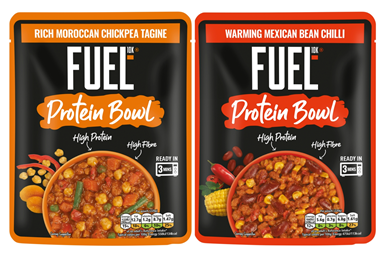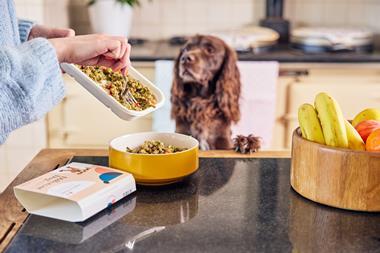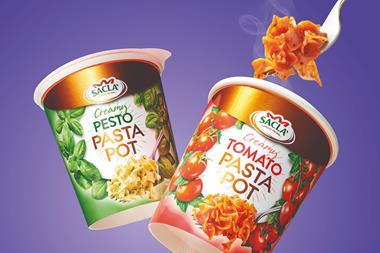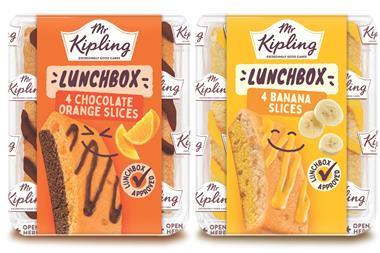Man's best friend may be falling out of favour with cash-strapped Brits.
Two retail analysts have suggested some consumers can no longer afford to keep a dog, and claim this has contributed to the 4.1% decline in volume sales of dogfood over the past year [Kantar Worldpanel 52w/e 7 August 2011].
Pet owners might not be replacing pets when they died, said SymphonyIRI insight manager Jason McCollin. "In the current economic climate, people are understandably hesitant to buy or replace a dog," he said, adding that the volume of food eaten by large dogs made them particularly expensive compared with other pets.
According to the RSPCA, it costs twice as much to feed a large breed of dog as a small one - £364 a year compared with £180. The charity has calculated that, in total, the owner of a large dog will splash out £1,380 in 12 months on their four-legged friend.
Kantar analyst Ian Steyn also suggested dog ownership had declined, and claimed the issue may have been compounded in northern and rural areas as these tended to have a higher ownership of large dogs and had been harder hit by the recession.
While the Pet Food Manufacturers' Association (PFMA) refuted the suggestion the economic gloom had brought about a decline in the UK's eight million pet dog population, animal charities said they were concerned about the impact of the downturn.
The RSPCA is examining if the economy has caused more animals being abandoned. The PDSA, which provides vet care to people who can't afford private fees, said some centres had seen a 50% rise in cases.
Industry observers have suggested other factors contributing to the fall in dogfood volumes, including owners supplementing pets' diets with scraps from their own plates. And, as Kantar measures volume sales by weight, another reason for the drop may be the shift away from heavy canned food towards lighter dried food and single-serve products.
"There has been a steady trend down in the volume of petfood sold," said Andrew Harding, market development director at Bakers and Winalot owner Nestlé Purina. "This is because there is a long-term move away from wet food towards dry, which is more concentrated nutrition."
However, the PFMA said its data showed sales of dogfood had risen slightly in 2010 and that it saw no evidence to support the theory owners were not replacing dogs.
Two retail analysts have suggested some consumers can no longer afford to keep a dog, and claim this has contributed to the 4.1% decline in volume sales of dogfood over the past year [Kantar Worldpanel 52w/e 7 August 2011].
Pet owners might not be replacing pets when they died, said SymphonyIRI insight manager Jason McCollin. "In the current economic climate, people are understandably hesitant to buy or replace a dog," he said, adding that the volume of food eaten by large dogs made them particularly expensive compared with other pets.
According to the RSPCA, it costs twice as much to feed a large breed of dog as a small one - £364 a year compared with £180. The charity has calculated that, in total, the owner of a large dog will splash out £1,380 in 12 months on their four-legged friend.
Kantar analyst Ian Steyn also suggested dog ownership had declined, and claimed the issue may have been compounded in northern and rural areas as these tended to have a higher ownership of large dogs and had been harder hit by the recession.
While the Pet Food Manufacturers' Association (PFMA) refuted the suggestion the economic gloom had brought about a decline in the UK's eight million pet dog population, animal charities said they were concerned about the impact of the downturn.
The RSPCA is examining if the economy has caused more animals being abandoned. The PDSA, which provides vet care to people who can't afford private fees, said some centres had seen a 50% rise in cases.
Industry observers have suggested other factors contributing to the fall in dogfood volumes, including owners supplementing pets' diets with scraps from their own plates. And, as Kantar measures volume sales by weight, another reason for the drop may be the shift away from heavy canned food towards lighter dried food and single-serve products.
"There has been a steady trend down in the volume of petfood sold," said Andrew Harding, market development director at Bakers and Winalot owner Nestlé Purina. "This is because there is a long-term move away from wet food towards dry, which is more concentrated nutrition."
However, the PFMA said its data showed sales of dogfood had risen slightly in 2010 and that it saw no evidence to support the theory owners were not replacing dogs.



















No comments yet